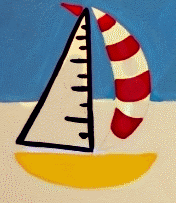Fever and Taking Temperatures
What is Fever?
Fever is the body's normal response to infections and may be helpful in fighting them. However, children under three months with ANY fever should be reviewed. The usual fevers (100 to 104°) that all children get are not harmful in themselves. Most are due to viral illnesses; some are due to bacterial ones. Teething does not cause fever.
The symptoms and characteristics of fever include a rectal temperature over 100.4° (37.8°C), and auxilliary (armpit) temperatures over 99°F (37.2°C). While the body's average temperature is 98.6°F (37°C), it fluctuates from a low of 97.6°F in the morning to a high of 100°F in the late afternoon. Mild elevations of 100.4° to 101.2°F (38° to 38.5°C) can be caused by exercise, excessive clothing, hot weather, or warm food or drink. If you suspect one of these causes, retake the temperature 30 minutes later.
How do you take temperatures?
Axillary. Place the tip of the thermometer in a dry armpit, and close the armpit by holding the elbow against the chest for at least four minutes (five or six minutes if your child is over two years of age). If you're uncertain about the result, check it with a rectal temperature.
Rectal. Place your child stomach down on your lap. Lubricate the end of the thermometer and the opening of the anus with petroleum jelly. Carefully insert it about one inch, but never force it. Hold the child still and press the buttocks together to stabilize the thermometer. Remove it after two minutes have passed.
Oral. Be sure your child has not recently taken a cold or hot drink. Place the tip of the thermometer underneath the tongue on either side, rather than at the front oof the mouth. The child should hold it in place for three minutes with the lips and fingers (not the teeth), keeping the mouth closed and breathing through the nose. If the nose is stopped up, take an axillary temperature.
How long does fever last?
Most fevers associated with viral illnesses range between 101° and 104°F and last for one to three days. In general, the height of the fever isn't related to the seriousness of the illness. What counts is how sick your child acts. With most infections, the level of fever bounces around for two or three days. Shivering or feeling cold indicates that the fever has peaked; sweating means it is coming down.
Fever causes no apparent permanent harm until at least 107°F is reached. Fortunately, the brain's thermostat keeps nearly all untreated fevers below this level. While all children develop fevers, only 4% have associated seizures.
When should I call?
Call us immediately at any time of day if your child is under three months old and has a fever. For children over three months of age, call if you are concerned about the degree of fever, or any significant change in your child's condition. Also call immediately if the child's neck is stiff, any purple spots are present on the skin, breathing is difficult and no better after you clear the nose, or a seizure has occurred.
We are also concerned if your child's fever has been present more than 72 hours, more than 24 hours without an obvious cause, or has returned after going away for more than 24 hours. Call if burning or pain occurs with urination or if your child has a history of seizures with fever.
Other measures to take
°Encourage, but don't force, extra fluids. Popsicles and iced drinks may help replace body fluids lost because of sweating.
°Keep clothing to a minimum; most heat is lost through the skin. Bundling up your child will cause a higher fever. Be especially careful of infants, who cannot undress themselves if they become overheated. If your child feels cold or is shivering, use a light blanket.
°Discourage vigorous activities because they produce additional heat. Normal play, however, is perfectly fine.
Click here for recommended doses of common medicines
Adapted from Contemporary Pediatrics.
Adapted from Barton D. Schmitt: The Pediatric Guide for Parents, New York, Bantam Books, Inc. ©1986.

